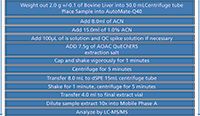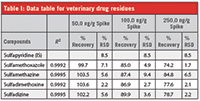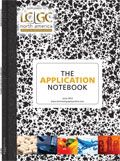Veterinary Drug Residue Analysis Using the AutoMate-Q40: An Automated Solution to QuEChERS
QuEChERS is a quick-easy-cheap-effective-rugged-safe extraction method developed in 2003 for the extraction of pesticide residues in agricultural commodities (1,2).
QuEChERS is a quick-easy-cheap-effective-rugged-safe extraction method developed in 2003 for the extraction of pesticide residues in agricultural commodities (1,2). Modifications to the method have expanded the scope to include many additional matrices and target analytes such as veterinary drug residues.
With the amounts of samples being required for residue analysis continually increasing, Teledyne Tekmar has developed the AutoMate-Q40. This revolutionary system is designed to automate the QuEChERS extraction workflow, allowing laboratories to be more efficient and timely in meeting their customer requirements for fast and reliable results.
The intent of this application is to evaluate the performance of the AutoMate-Q40 by monitoring veterinary drug residues in bovine liver. The target compounds (sulfonamides) will be analyzed using LC–MS-MS.
Extraction and Clean-Up
Figure 1 shows the flow chart for the QuEChERS extraction procedure for bovine liver using the AutoMate-Q40.

Figure 1: QuEChERS extraction for bovine liver.
Results and Discussion
A precision and accuracy study was performed on the bovine liver samples using the AutoMate-Q40. A 2.0 µg/mL stock solution was used to fortify the liver samples. The AutoMate-Q40 spiked the samples with 50.0, 100.0, and 250.0 µL of the standard to produce 50.0, 100.0, and 250.0 ng/g check samples. These QC samples were quantitated against a corresponding matrix matched calibration.
Table I shows that when using the AutoMate-Q40 to extract veterinary drug residues from bovine liver samples, it exhibits recoveries ranging from 74.2% to 103.6%. By using the AutoMate-Q40 for the QuEChERS extraction, it showed great precision ranging from 1.2% to 9.4% RSD for the spiked QC samples.

Table I: Data table for veterinary drug residues
Conclusion
This study demonstrates the feasibility of automating the QuEChERS extraction method using the AutoMate-Q40. The extraction process is faster, more reliable, and easier. This enables time and labor savings, while improving consistency and repeatability of the extraction. As shown above in Table I combined veterinary residues spikes recovered at 89.5% with an average RSD of 4.5%. These numbers indicate superb precision and accuracy thus validating the performance of the AutoMate-Q40 and its use as an excellent analytical tool.
References
(1) European Committee for Standardization/Technical Committee CEN/TC275, "Foods of plant origin: Determination of pesticide residues using GC–MS and/or LC–MS-MS following acetonitrile extraction/partitioning and cleanup by dispersive SPE QuEChERS-method" (2008).
(2) AOAC Official Method 2007.07 Pesticide Residues in Food by Acetonitrile Extraction and Partitioning with Magnesium Sulfate. Gas Chromatography–Mass Spectrometry and Liquid Chromatography–Tandem Mass Spectrometry, First Action (2007).

Teledyne Tekmar
4736 Socialville Foster Rd., Mason, OH 45040
tel. (513) 229-7000
Website: www.teledynetekmar.com


.png&w=3840&q=75)

.png&w=3840&q=75)



.png&w=3840&q=75)



.png&w=3840&q=75)














